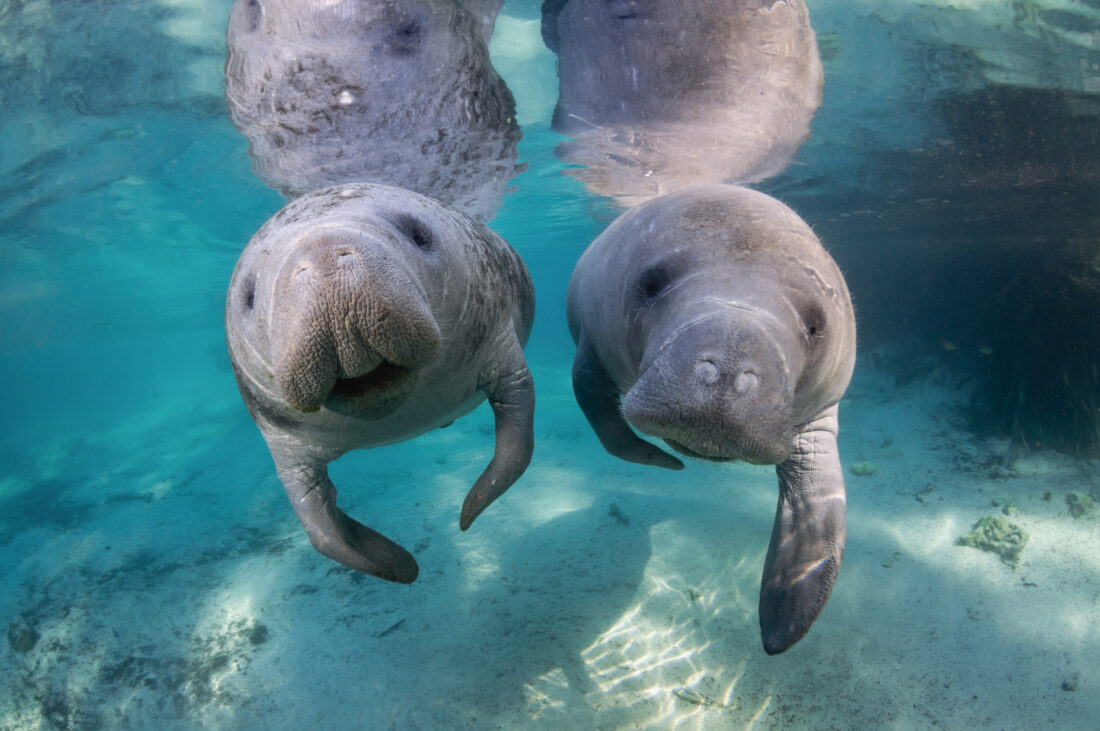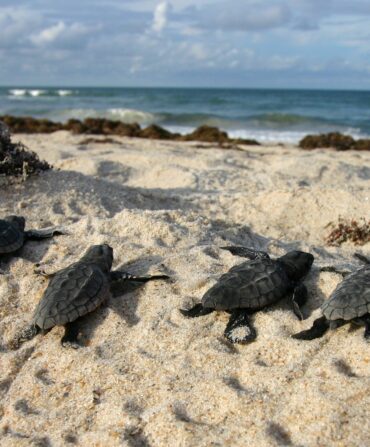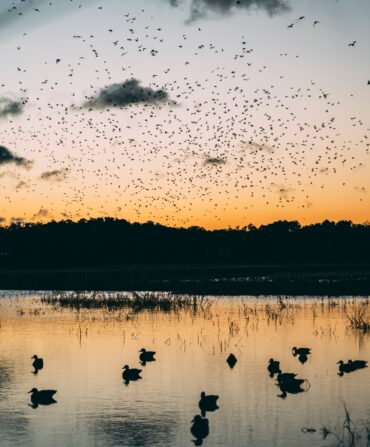Every winter between November and April, Florida’s beloved manatees vacate the colder waters of the Gulf of Mexico and the Atlantic Ocean and spend their time inland at balmy springs that hover around seventy-two degrees year-round. During extreme cold snaps, it’s possible to see hundreds of them converging in small areas where warm water gushes up from the spring head—a survival tactic that makes for an incredible spectacle. Between November and April, Kings Bay and the sanctuaries within the Crystal River National Wildlife Refuge are home to the largest gathering of wild manatees in the world.

As a longtime Floridian, I’ve been in the waters around Crystal River in the winter when young manatees have approached me and taken me by surprise, spending minutes nuzzling my wet-suited arm. I’ve paddled through waters so thick with them I resigned to just float atop my kayak like a manatee myself, paddle raised and motionless, waiting for an opening before daring to dip it back into the water. Recently, on a trip with a friend to Three Sisters Springs north of Tampa, where cold fronts attract the gentle giants by the scores, I started to wonder, given their threatened status and the many challenges they have recently faced: Should we be swimming with them?
I decided to ask an expert.
According to Joyce Palmer, manager of the Crystal River National Wildlife Refuge Complex within the U.S. Fish and Wildlife Service, the answer is yes—with a few caveats. “Manatee-initiated encounters, where manatees approach and interact with people in the water, are common here,” she says, and legal. However, interactions initiated by people that change the behaviors of manatees are illegal. That includes things like separating or attempting to separate a mother and calf, disturbing a resting or feeding manatee, and (incredible that this needs to be stated) “hitting, jumping on, standing on, holding on to, or attempting to ride manatees,” according to the FWC’s official Guidelines for Protecting Florida Manatees.
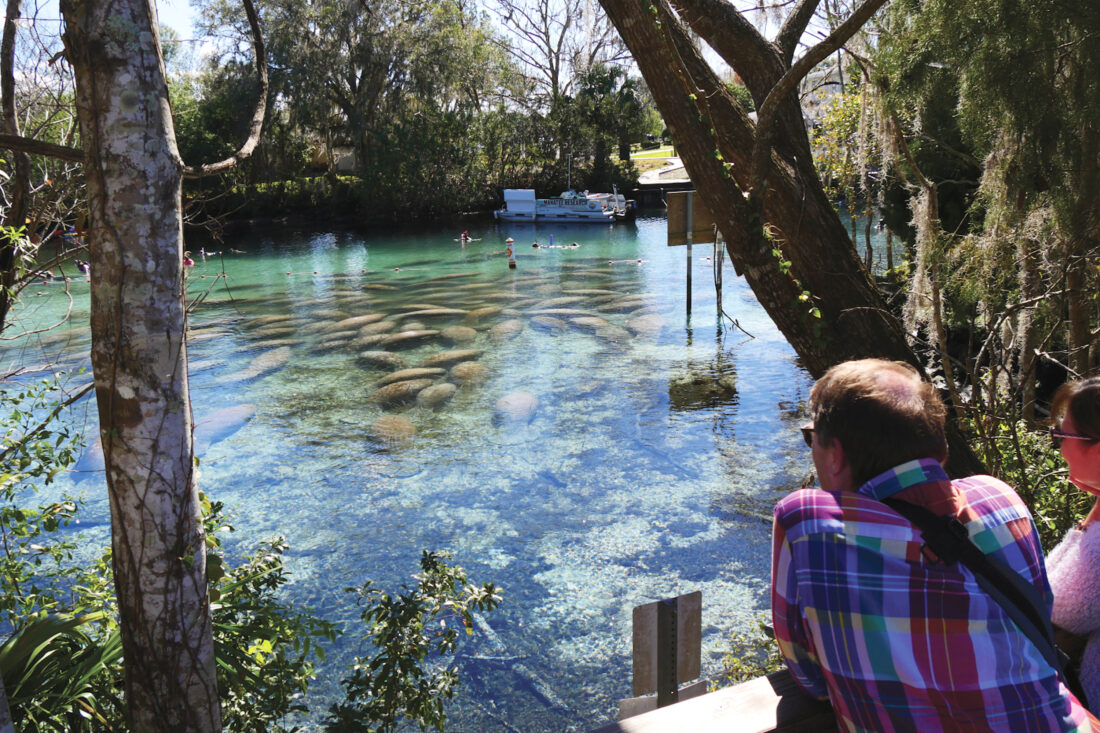
And there are benefits to sharing the water, too: “It promotes awareness of manatees and their habitats,” Palmer says. “People who swim with manatees are more likely to support manatee and springs conservation.” That’s something I can personally vouch for after my recent trip to Three Sisters Springs.
My friend and I rented kayaks from Paddles Outdoor Rentals for the short self-guided trip from the put-in point to the spring. Once there, we anchored our kayaks in the shallow waters, slipped on our masks and snorkels, and sank into the water.
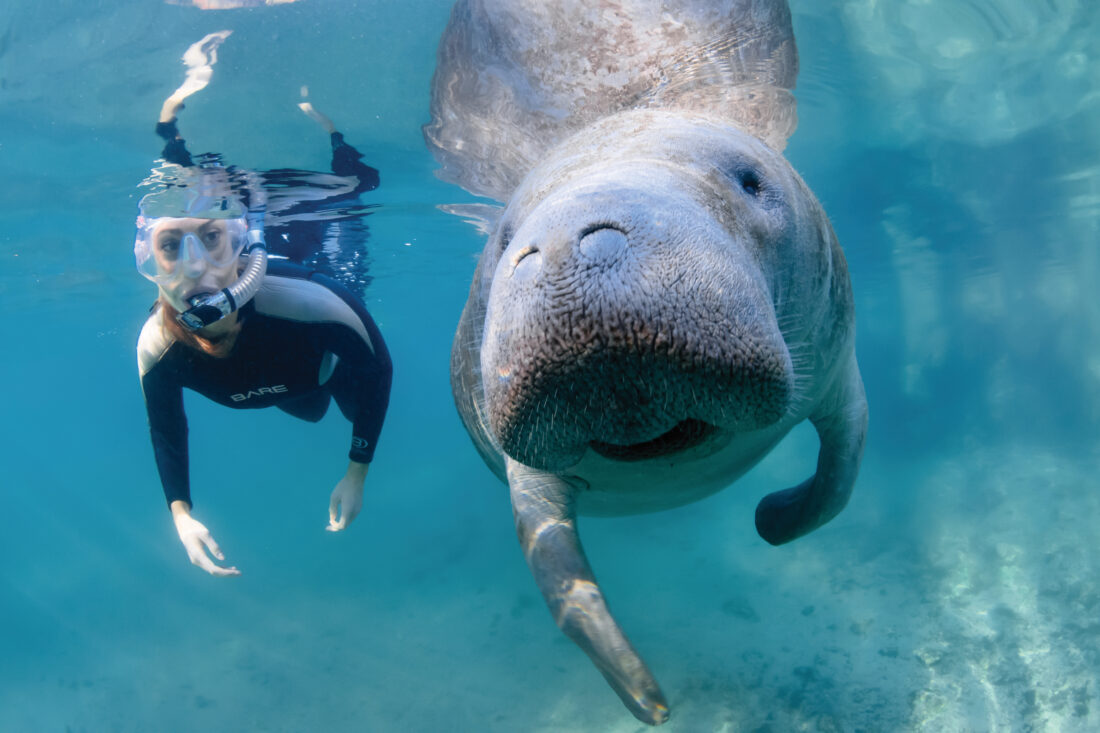
As we swam toward the spring head, where the water turns as clear as the Caribbean in shades of turquoise and emerald green, three enormous manatees were squeezing through the narrow entrance at precisely the same moment. The water was just a few feet deep and there was nowhere for us to go, so we glued ourselves to the bank and flattened into pancakes at the surface as we watched the gentle giants pass beneath. The animals barrelled (for manatees, anyway) past us on the outgoing current into the river, “oohs” and “ahs” rising through snorkel tubes from the dozens of humans around. Someone was even moved to tears.
As we watched, I felt awe but also worry, wondering if I wasn’t in their way, though they paid me no mind at all. Being in their presence never gets old—whether they come in close for a nuzzle or keep their distance like the wild animals they are—but I was reminded it must always be on the manatees’ terms.
Guidelines for swimming with manatees responsibly
As an added protection for the manatees, make sure you only rent kayaks or head out on tours with operators holding FWC special-use permits that allow them to operate within the refuge. A complete list can be found here.
Watch the Manatee Manners video, available in several different languages, before your trip.
Wearing fins isn’t forbidden, but for lower-impact swimming around the animals it’s better to ditch them. “Some companies encourage guides to wear fins for safety purposes,” said Robin Gelinas of Fun 2 Dive, a Crystal River operator offering guided manatee swim tours from pontoon boats. “But we ask guests not to use fins themselves. You’re not swimming with your feet anyway; you’re going through the water with a doggie-paddle motion.”
Use a pool noodle and wetsuit to help you stay calmly at the surface. “Noodles help you stay on the surface of the water and your wetsuit helps provide buoyancy, too, so you don’t feel like you have to tread water or make big movements,” Gelinas says.
Consider going on a guided tour—both to get educated on what you’re witnessing and to make sure you and your fellow visitors follow in-water protocol around the animals.


